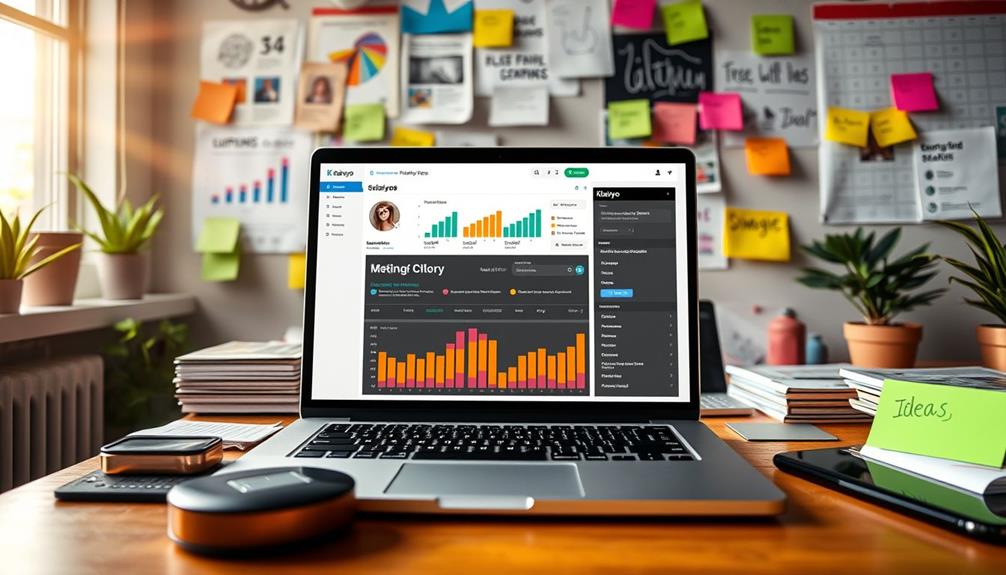Cleaning your email list in Mailchimp's essential for effective communication and marketing success. Start by removing unengaged or invalid addresses. This boosts deliverability and engagement, protecting your reputation. Implement double opt-in for new subscribers and establish a regular cleaning schedule, ideally quarterly or biannually. Use Mailchimp's segmentation feature to manage inactive contacts and target them with re-engagement campaigns. Utilize email validation tools to maintain accuracy and remove duplicates. Finally, set up automation for ongoing list maintenance to keep your audience engaged. There's much more to explore on optimizing your email list for the best results.
Key Takeaways
- Regularly remove unengaged and invalid contacts to maintain list hygiene and improve email deliverability.
- Utilize email verification tools to identify and clean invalid addresses efficiently.
- Establish a routine cleaning schedule, ideally every quarter or biannually, for ongoing list maintenance.
- Segment your Mailchimp lists to manage inactive subscribers and target re-engagement campaigns effectively.
- Implement automation features to streamline list cleaning processes and enhance subscriber engagement over time.
Definition and Importance of Email List Cleaning

Cleaning your email list means regularly removing unengaged, unsubscribed, invalid, or duplicate contacts. Email list cleaning is critical for maintaining a healthy subscriber list and guaranteeing effective communication with your audience.
By removing inactive email addresses, you enhance your list hygiene, which directly impacts your email deliverability and engagement rates. Additionally, maintaining a clean list can reflect your commitment to proper financial management, as it aligns with strategies like effective budget planning that help maximize your marketing ROI.
When you clean your list, you're not just tidying up; you're protecting your sender reputation. A clean list helps guarantee that your emails reach the intended recipients and don't end up in spam folders. Ignoring unengaged subscribers can hurt your sender reputation, leading to lower deliverability rates.
Moreover, compliance with email marketing laws like the CAN-SPAM Act and GDPR requires you to remove unsubscribed addresses promptly. Regularly cleaning your list keeps you compliant and avoids legal repercussions.
Ultimately, the goal is to target active subscribers effectively, which maximizes your return on investment (ROI) from your email marketing efforts. By focusing on list hygiene, you can foster a more engaged Mailchimp audience, driving better results for your campaigns.
Benefits and Best Practices

Maintaining a clean email list offers a range of benefits that can greatly enhance your marketing efforts. By regularly cleaning your Mailchimp list, you'll improve email deliverability, reduce bounce rates, and enhance your sender reputation. This means your emails reach engaged subscribers more effectively.
Additionally, focusing on content relevance and authority guarantees that your messaging aligns with subscriber interests, further increasing engagement. Targeting active and interested subscribers can considerably boost your open rates and click-through rates, ultimately increasing your ROI.
Implementing best practices is essential. Consider using double opt-in for new subscribers to confirm genuine interest, and conduct regular audits every six months. This keeps your list compliant with regulations like the CAN-SPAM Act and GDPR.
Utilizing email verification tools and Mailchimp's built-in features can streamline identifying and removing invalid or inactive email addresses, optimizing your list quality.
Don't forget about your inactive subscribers. Instead of immediately purging them, engage them with targeted re-engagement campaigns. This approach can rekindle interest and potentially retain valuable contacts.
If you find the process overwhelming, you might also explore list cleaning services that can assist in maintaining a healthy email list. Embracing these strategies will help maximize the effectiveness of your email marketing efforts.
Steps to Clean Mailchimp Lists
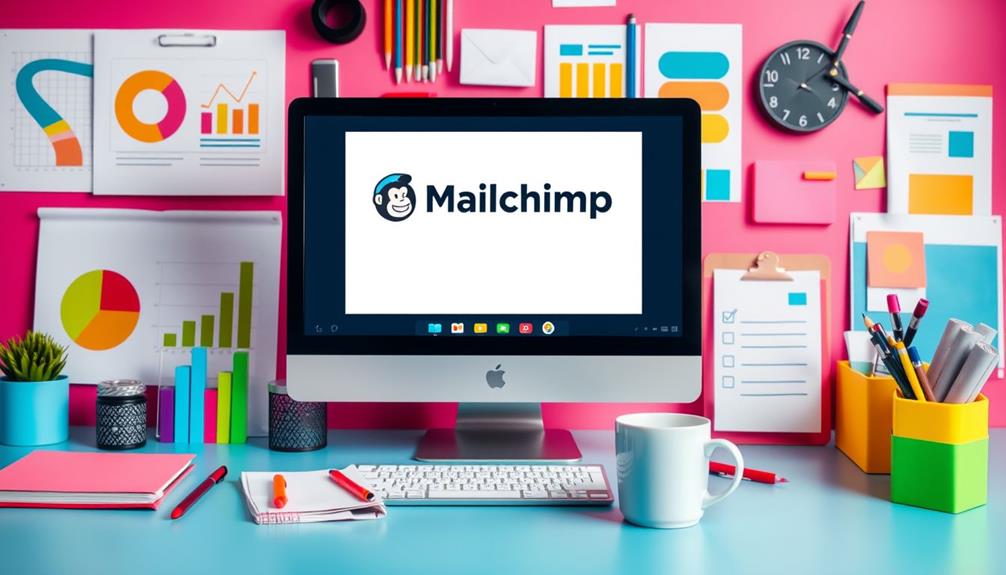
To start cleaning your Mailchimp lists, you'll want to export your email list from the dashboard.
This step helps you analyze subscriber engagement and pinpoint inactive contacts. By identifying these subscribers, you can take action to improve your overall list health.
Consider utilizing top platforms for various skill levels and interests to enhance your strategies further.
Exporting Your Email List
Export your email list from Mailchimp to kickstart the cleaning process. To do this, navigate to the Audience dashboard, select the audience you want to work with, and click on the "Export Audience" option. This will generate a CSV file containing all your contacts, which you can then download to your computer.
Conducting regular list maintenance can guarantee a more effective outreach, akin to how background checks help identify potential red flags in candidate histories.
Once you have your exported list, open the CSV file using a spreadsheet tool. This will allow you to analyze your contacts effectively. Focus on identifying any inactive email addresses—those that haven't engaged with your recent campaigns. You can use Mailchimp's built-in tools to filter your audience and locate these inactive subscribers.
After pinpointing the inactive contacts, create segments within Mailchimp to manage them efficiently. From there, you can easily remove inactive subscribers from your list.
To maintain a high-quality email list, establish a routine cleaning schedule—quarterly or biannually—to guarantee you're consistently cleaning your email list. Regularly exporting your email list and following these steps will help you maintain peak engagement with your audience.
Identifying Inactive Subscribers
After exporting your email list, it's time to pinpoint those inactive subscribers who might be dragging down your engagement rates. Start by analyzing your engagement metrics, focusing on open rates and click-through rates over the last six months. This will help you identify which subscribers haven't interacted with your email marketing campaigns.
Additionally, consider effective email marketing strategies to enhance your outreach efforts and engage your audience better.
Next, use the segment button in your Mailchimp account to create segments for contacts who haven't opened any emails or clicked on links during that timeframe. This isolation allows for effective identifying inactive subscribers.
Take advantage of Mailchimp's reporting tools to filter subscribers by their last engagement date, making it easy to track subscriber activity and flag those who haven't engaged for over three months.
Once you've identified these inactive subscribers, consider implementing targeted re-engagement campaigns aimed at rekindling their interest. This proactive approach can help you re-engage inactive contacts before deciding whether to remove emails from your list.
Regularly evaluating your engagement metrics will keep your email list healthy and improve your overall campaign performance.
Tools and Resources
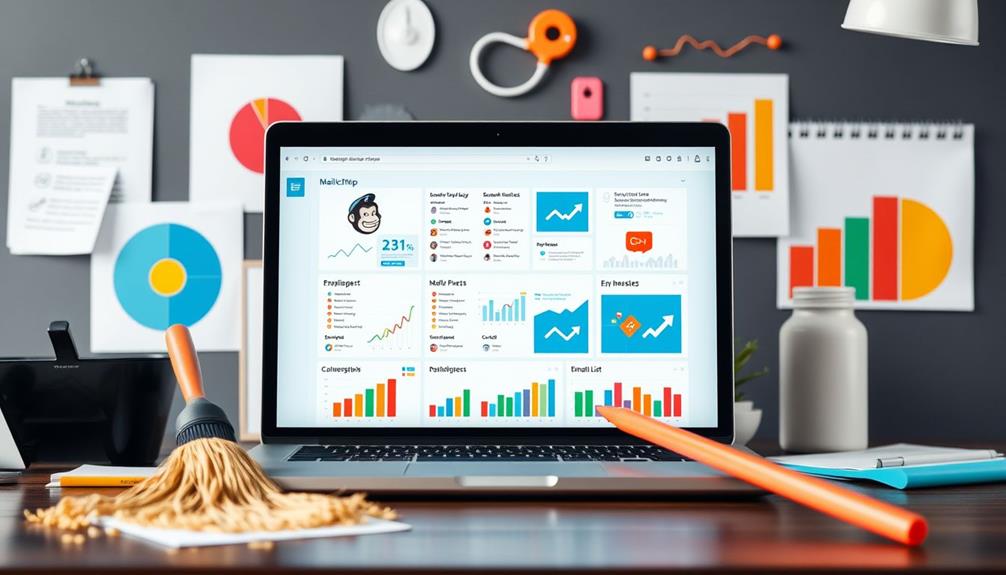
To keep your email list in top shape, you can use email validation software to spot and remove invalid addresses.
Implementing a methodical approach to list management is essential, as it guarantees systematic checks for accuracy and relevance, aligning with key traits of successful engineers.
Integrating tools like Lemlist and Bouncer with Mailchimp can further enhance your list's quality by identifying low-deliverability emails.
Plus, leveraging Mailchimp's automation features makes ongoing list maintenance a breeze, so you can focus on engaging your audience.
Email Validation Software
Cleaning up your email list is essential for maintaining effective communication with your audience, and using email validation software can streamline this process. These tools help you identify and remove invalid emails, ensuring your mailing list is clean and efficient. By detecting incorrect formats, non-existent mailboxes, and potential spam traps, you enhance deliverability rates and reduce hard bounces.
Here's a quick comparison of popular email validation software options:
| Tool Name | Key Features | Pricing |
|---|---|---|
| EmailListValidation | Detects invalid emails, removes spam traps | Starting at $20/month |
| ZeroBounce | Real-time validation, email appending | Starting at $15/month |
| NeverBounce | Easy integration with Mailchimp | Pay-as-you-go |
Using email validation software not only saves you time by automating the process, but it also improves data quality. Regularly validating your contacts can lead to higher engagement rates and a better return on investment. As a Mailchimp user, this means your emails reach genuinely interested subscribers, reducing spam complaints and enhancing your overall campaign performance. So, don't hesitate to leverage these tools for a cleaner, more effective mailing list!
Integration With Mailchimp
Integrating email validation tools with Mailchimp can greatly enhance your list management efforts. By using email validation software, like emaillistvalidation.com, you can identify and remove invalid addresses and spam traps from your email list. This integration helps guarantee that your audience remains engaged and that your campaigns reach real subscribers.
Additionally, employing strategies to maintain a balance between technology use and creative expression can lead to more engaging email content and higher response rates, as highlighted in the importance of nurturing an imaginative mindset.
Mailchimp provides built-in tools that automatically remove duplicate email addresses and pinpoint inactive contacts. You can easily archive these inactive subscribers, reducing your audience size without losing valuable data for potential future engagement. This practice is vital for keeping your list clean and focused.
Additionally, Mailchimp's segmenting features allow you to create targeted groups for your campaigns, optimizing engagement with your active subscribers.
Regularly monitoring your audience dashboard for engagement metrics and conducting list reviews is essential for maintaining list hygiene.
Automation for List Maintenance
For effective list maintenance in Mailchimp, automation tools can be a game changer. By integrating platforms like IFTTT and Zapier, you can streamline the process of managing and updating subscriber information. This way, you'll guarantee your list contains only cleaned addresses, which greatly enhances your email deliverability.
Additionally, it's important to avoid scams that can compromise your data integrity.
Mailchimp's built-in segmentation feature allows you to automatically identify and isolate inactive subscribers. This helps you create targeted re-engagement campaigns that can rekindle interest and improve your overall engagement rates.
Additionally, you can enhance list quality by integrating email validation services like Lemlist and Bouncer, which automatically remove invalid or inactive email addresses.
Utilizing automated reminders for regular audits is another effective strategy for ongoing list maintenance. This keeps your subscriber data fresh and relevant while reducing the risk of bounced emails.
Plus, implementing automated welcome emails nurtures new subscriber relationships right from the start, setting a positive tone for future communications.
Re-engagement Strategies
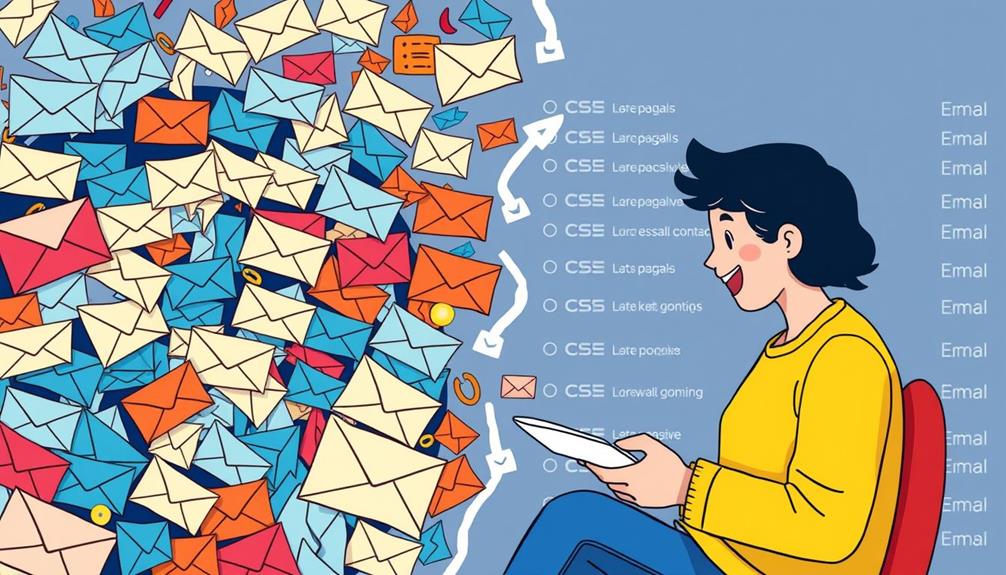
If you've noticed some subscribers going silent, re-engagement strategies can help breathe new life into your email list. By implementing targeted re-engagement campaigns, you'll rekindle interest and keep your contact list fresh.
Engaging your audience through creative projects can enhance their connection with your brand and make your emails more appealing creative projects. Here are some effective tactics:
- Offer Special Discounts: Provide exclusive offers to entice inactive subscribers back into the fold.
- Conduct Feedback Surveys: Use these surveys to understand why subscribers disengaged, allowing you to tailor your email content and improve relevance.
- Monitor Engagement Metrics: Keep an eye on how well your re-engagement campaigns perform. This helps you identify which strategies successfully revive interest.
- Encourage Social Media Interaction: Link your social media platforms in your re-engagement emails to foster a connection beyond email, making your marketing efforts more integrated.
Automation and Ongoing Maintenance
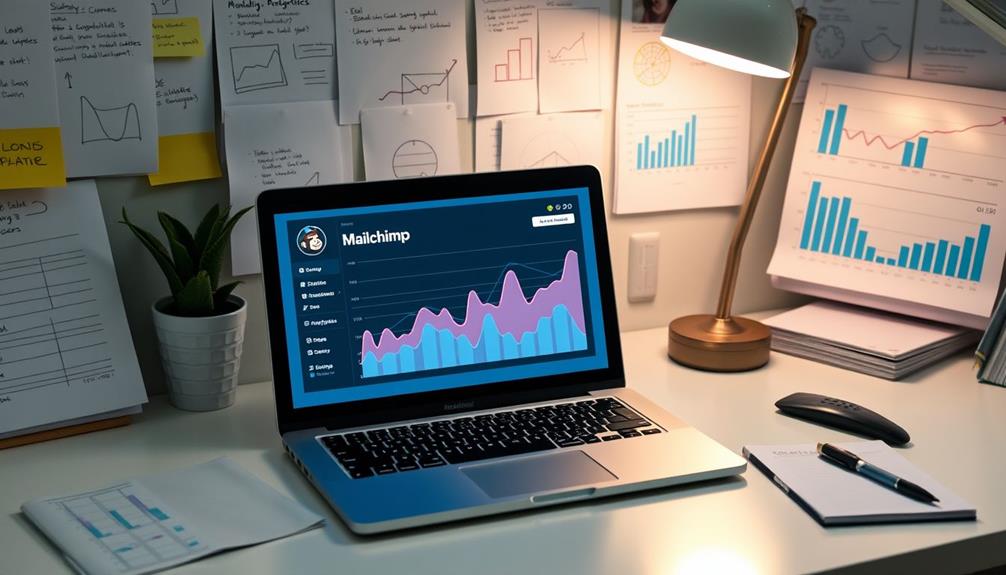
Maintaining a clean and engaged email list is essential for your marketing success, and automation can greatly simplify this process. By automating your email list cleaning, you can save time and guarantee consistent maintenance. Tools can automatically remove invalid addresses and inactive contacts on a scheduled basis, enhancing your data quality.
Here's a quick overview of effective automation strategies:
| Strategy | Description |
|---|---|
| Regular Cleaning Schedules | Set up cleaning intervals every six months or quarterly in Mailchimp. |
| Segmenting Feature | Use Mailchimp's segmenting feature to filter out engaged subscribers. |
| Welcome Emails | Nurture new relationships with automated welcome emails. |
| Transactional Emails | Keep subscribers engaged by sending relevant transactional emails. |
| Tools like IFTTT/Zapier | Streamline list cleaning and verification processes. |
Implementing these strategies not only helps maintain your list but also guarantees ongoing maintenance. By focusing on engaged subscribers, you can improve your email deliverability and overall campaign effectiveness. Embrace automation to transform your email list cleaning into a smooth, efficient process.
Frequently Asked Questions
How Do You Clean Your Mailchimp Email List?
To clean your Mailchimp email list, start by exporting it. Identify inactive subscribers, create segments, and consider re-engagement campaigns. Regularly schedule cleanups every six months to maintain list hygiene and improve email performance.
Should You Delete Cleaned Emails From Mailchimp?
You don't have to delete cleaned emails from Mailchimp since they don't count against your limits. Keeping them can help you track engagement trends and address issues for potential re-engagement in the future.
How Do I Clean up My Email Contacts?
Ever wonder how to boost your email engagement? Start by exporting your contacts, identifying inactive subscribers, and using segmentation tools. Regularly clean your list and consider re-engagement campaigns to keep your audience interested.
How Do I Organize My Mailchimp Emails?
To organize your Mailchimp emails, create segments based on subscriber behavior, use tags for interests, implement a clear naming convention, group emails in folders, and regularly review your strategy to stay aligned with your goals.
Conclusion
Cleaning your email list isn't just a chore; it's essential for your success. Did you know that maintaining a clean list can boost your open rates by up to 30%? By following the steps and best practices outlined, you'll not only improve engagement but also save money on your Mailchimp subscription. Keep your list fresh and active, and watch your email marketing efforts flourish. Remember, a healthy list is a happy list!

